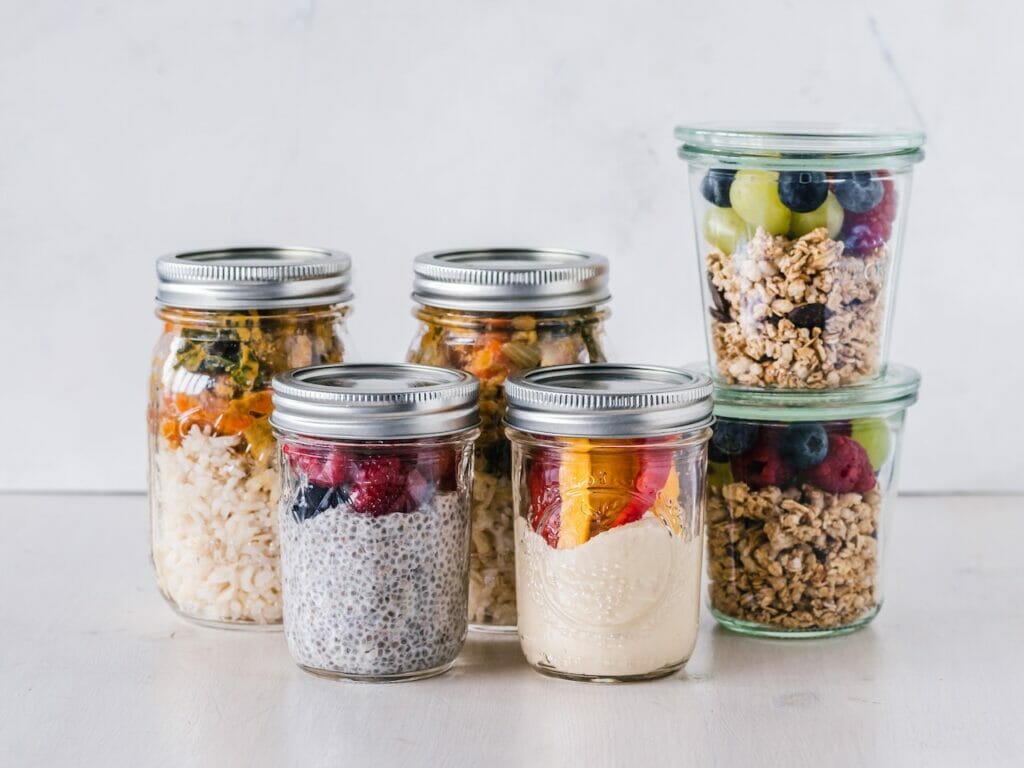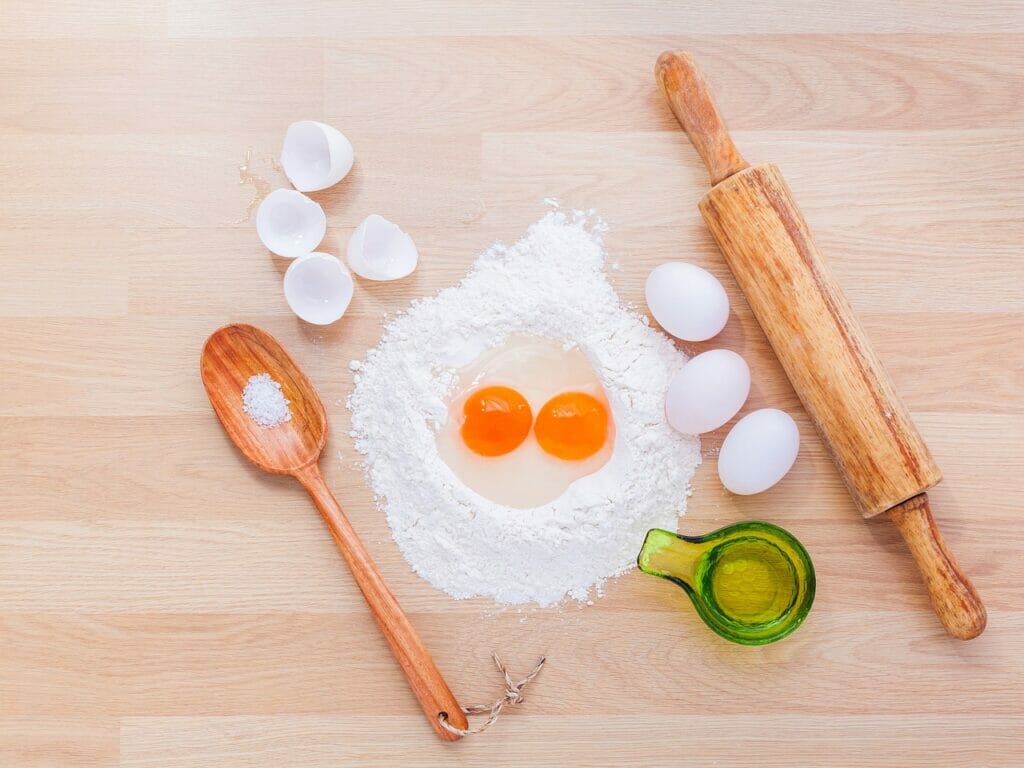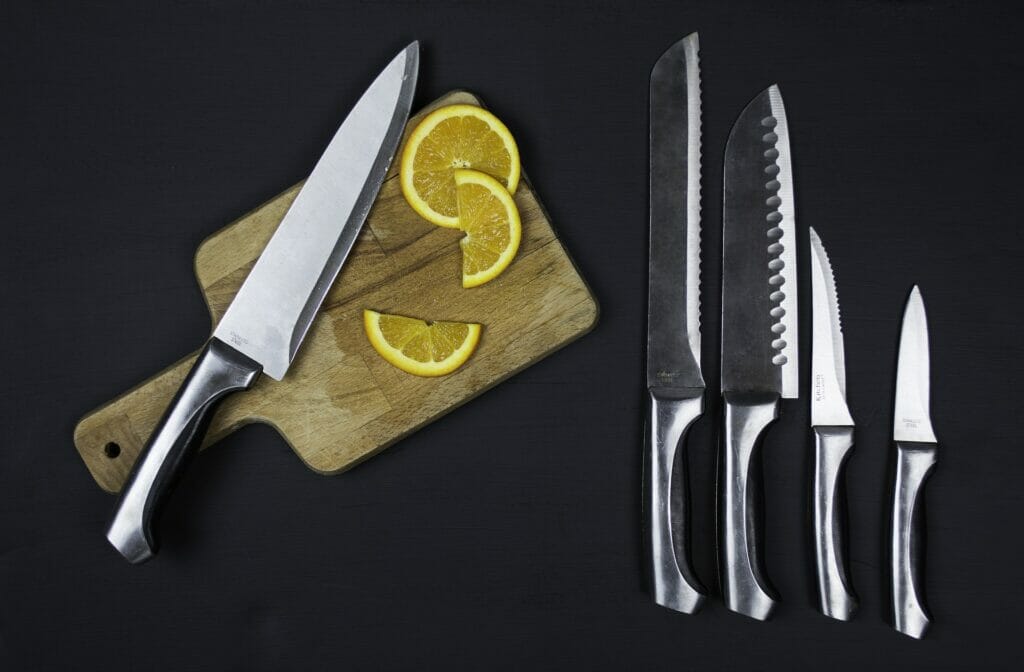
I can’t stress enough the importance of proper food storage and handling. It keeps your food safe and fresh and also ensures that food ingredients taste the best. In this article I’ll share my top tips and tricks on how to store and handle food like a pro. Let’s dive in. This article will cover the following topics.
- 1. Proper Storage Techniques for Different Types of Food
- 2. The Importance of Food Safety and Preventing Cross-Contamination
- 3. How to Store Leftovers and Prevent Food Waste
- 4. Thawing and Reheating Food Safely
- 5. Tips for Organizing Your Fridge and Pantry
- 6. Choosing the Right Containers for Food Storage
- 7. Storing Fruits and Vegetables for Optimal Freshness
- 8. Safe Thawing Techniques
- 9. Food Handling and Hygiene
- 10. Cooking Foods to Safe Internal Temperatures
- 11. Food Storage Containers and Labels
- 12. Rotation and Organization in Your Pantry and Refrigerator
- 13. Safe Handling and Storage of Cooked Foods
- 14. Safe Handling and Storage of Baked Goods
- Frequently Asked Questions
1. Proper Storage Techniques for Different Types of Food
Knowing how to store different types of food is crucial for maintaining their quality, taste, and safety. I will break it down by food category:
Fruits and Vegetables
- Store fruits and vegetables separately, as some fruits release ethylene gas, which can cause vegetables to spoil more quickly.
- Keep produce in their original packaging or use breathable storage containers with proper ventilation.
- Don’t wash fruits and vegetables until you’re ready to use them, as moisture can promote mold growth.
- Store delicate herbs like basil, cilantro, and parsley in a glass of water, loosely covered with a plastic bag, and refrigerate.
Meats, Poultry, and Fish
- Store raw meats, poultry, and fish in sealed containers or plastic bags to prevent cross-contamination with other foods.
- Place these items on the bottom shelf of the refrigerator to prevent drippings from contaminating other foods.
- Use a dedicated cutting board for raw meats, poultry, and fish, and wash it thoroughly after each use. Check out my article on 5 Simple Knife Cutting Techniques You Will Ever Need for tips on how to handle these ingredients with precision.
Dairy and Eggs
- Store dairy products and eggs in the main body of the refrigerator, where temperatures are more consistent, rather than on the door shelves.
- Keep eggs in their original carton to protect them from absorbing odors and to help you keep track of their expiration date.
Grains
- Store grains, such as rice, pasta, and flour, in airtight containers in a cool, dry place, away from direct sunlight.
2. The Importance of Food Safety and Preventing Cross-Contamination
Cross-contamination can lead to foodborne illnesses. It is therefore vital to follow proper food handling practices. Here are some key tips:
- Always wash your hands with soap and water before and after handling food.
- Use separate cutting boards and utensils for raw meats, poultry, fish, and ready-to-eat foods, like fruits and vegetables.
- Clean and sanitize your cutting boards, utensils, and countertops after preparing raw meats, poultry, or fish.
- Avoid using the same dish towel for drying your hands, wiping countertops, and handling hot pots and pans. It’s best to designate separate towels for each purpose.
For more tips on how to elevate your home cooking, take a look at my article, 17 Cooking Methods You Need to Elevate Your Meals Now.
3. How to Store Leftovers and Prevent Food Waste
Properly storing leftovers can extend their shelf life and maintain their quality, so you can reuse them for another meal. This is good for the environment and for your wallet. Here are some best practices for storing leftovers:
- Allow hot food to cool to room temperature before refrigerating, but don’t leave it out for more than two hours to prevent bacterial growth.
- Store leftovers in airtight containers or resealable plastic bags, and label them with the date for easy reference.
- Use a first-in, first-out (FIFO) system in your fridge: move older leftovers to the front and place newer leftovers at the back.
- Consider freezing leftovers if you don’t plan to eat them within three to four days. Freezing can significantly extend the shelf life of many foods.
4. Thawing and Reheating Food Safely
Proper thawing and reheating are essential to ensure food safety and preserve taste and texture. Here’s how to do it right:
Thawing
- Ideally, thaw frozen foods in the refrigerator, which keeps the temperature at a safe level and minimizes the risk of bacterial growth.
- For faster thawing, place frozen food in a sealed plastic bag and submerge it in cold water. Change the water every 30 minutes to maintain a consistent temperature.
- As a last resort, use the defrost setting on your microwave, but be aware that this method can sometimes affect the texture of the food.
Reheating
- Reheat leftovers to an internal temperature of at least 165°F (74°C) to kill any bacteria that may have formed during storage.
- Use a food thermometer to ensure the correct internal temperature has been reached.
- Stir food during reheating to ensure even heat distribution and prevent cold spots.
For more beginner-friendly advice, check out my article 10 Simple Tips for Beginner Home Cooks That Will Make Your Dishes Out of This World.
5. Tips for Organizing Your Fridge and Pantry
A well-organized fridge and pantry will make it easier to find what you need. It will also help you keep track of expiration dates and prevent food from being through away. Here are some tips for organizing your food storage:
- Use clear, stackable storage containers to maximize space and visibility.
- Group similar items together, like condiments, baking supplies, and canned goods.
- Use shelf organizers, lazy Susans, and storage bins to make the most of your available space.
- Regularly clean out your fridge and pantry to get rid of expired items and make room for new groceries.
6. Choosing the Right Containers for Food Storage
You absolutely need to choose the appropriate containers for storing food. It can make a significant difference in being able to keep your food longer and prevent spoilage. Here are some tips for choosing the right containers:
- Opt for airtight containers made from glass or BPA-free plastic, as they are durable and prevent contamination from air and moisture.
- Use containers of various sizes to accommodate different types of foods and portion sizes.
- Consider investing in vacuum-sealing containers or bags, which can extend the shelf life of many foods by removing air and limiting bacterial growth.
7. Storing Fruits and Vegetables for Optimal Freshness
The right storage technique of fruits and vegetables is essential to maintain their freshness and taste. Here’s how to store them correctly:
- Store fruits and vegetables separately, as some fruits release ethylene gas, which can cause nearby vegetables to spoil faster.
- Use your refrigerator’s crisper drawers to store fruits and vegetables that require high humidity, like leafy greens, and keep those that need low humidity, like apples and avocados, in separate compartments.
- Avoid washing fruits and vegetables before storing them, as excess moisture can lead to mold growth. Instead, wash them right before consumption or cooking.
- For fruits and vegetables that continue to ripen after being picked, like tomatoes and bananas, store them at room temperature until they reach your desired ripeness. Afterwards you can put them in the refrigerator to slow down the ripening process.
8. Safe Thawing Techniques
To maintain food quality and safety, it’s crucial to thaw frozen foods correctly. Follow these methods to ensure safe thawing:
- Refrigerator thawing: Thaw food in the refrigerator, ideally on a plate or tray to catch any drips. This method is the safest, as it maintains a consistent temperature and minimizes bacterial growth. Plan ahead, as this method takes the longest time.
- Cold water thawing: Submerge the food in a sealed, leak-proof plastic bag in cold water. Change the water every 30 minutes to maintain the temperature. This method is faster than refrigerator thawing, but the food should be cooked immediately after thawing.
- Microwave thawing: Use your microwave’s defrost function to thaw food quickly. Beware that this method can cause (will certainly cause!) uneven thawing. Then the food must be cooked immediately after thawing otherwise the bacteria will develop very fast.
Please never thaw food at a room temperature – it encourages rapid bacterial growth and can lead to foodborne illness.
9. Food Handling and Hygiene
To prevent cross-contamination and ensure food safety, a proper food handling and hygiene practices are crucial. Follow these essential tips:
- Wash your hands thoroughly with soap and warm water before and after handling food, especially raw meat, poultry, and seafood.
- Use separate cutting boards, knives, and utensils for raw and cooked foods, and wash them with hot, soapy water after each use.
- When marinating foods, always use a clean container and discard any leftover marinade that has come into contact with raw meat or poultry.
- Regularly clean and sanitize countertops, cutting boards, and other kitchen surfaces.
10. Cooking Foods to Safe Internal Temperatures
To eliminate harmful bacteria and ensure food safety, cook foods to their recommended internal temperatures. Use a food thermometer to check for doneness and follow these guidelines:
- Poultry (whole, pieces, and ground): 165°F (74°C)
- Ground meats (excluding poultry): 160°F (71°C)
- Beef, pork, lamb, and veal (steaks, chops, and roasts): 145°F (63°C), with a three-minute rest time
- Fish and shellfish: 145°F (63°C)
Proper food storage and handling will definitely contribute to creating out-of-this-world dishes. So, invest time in mastering these essential rules.
11. Food Storage Containers and Labels
Using the right storage containers and labeling them properly can help maintain food quality and prevent spoilage. Follow these guidelines for effective food storage:
- Choose airtight containers made of food-grade materials like glass or BPA-free plastic to keep your food fresh and safe from contaminants.
- Label containers with the contents and date of storage. This will help you to know if the food is fresh or needs to be thrown away.
- When storing leftovers, allow them to cool down before placing them in the refrigerator or freezer to prevent raising the temperature inside the appliance.
12. Rotation and Organization in Your Pantry and Refrigerator
Organizing and rotating food items in your pantry and refrigerator can help prevent spoilage and ensure you’re consuming your food in the optimal order. Use these strategies for effective food rotation and organization:
- Implement the “first in, first out” (FIFO) method. Place newly purchased items behind older ones, ensuring that you use up the older products before the newer ones.
- Keep similar items together, like canned goods, grains, and baking ingredients, for easy access and visibility.
- Regularly check for expired items and dispose of them accordingly. This will help prevent accidental consumption of spoiled food and free up space for fresh products.
13. Safe Handling and Storage of Cooked Foods
Handling and storing cooked foods properly is essential to maintain their safety and quality. Follow these guidelines for cooked food storage:
- Allow hot foods to cool down at room temperature for no more than two hours before placing them in the refrigerator or freezer.
- Store cooked foods in shallow, airtight containers to promote even cooling and prevent the growth of harmful bacteria.
- Consume refrigerated leftovers within three to four days or freeze them for longer storage. Frozen leftovers should ideally be consumed within two to six months, depending on the food type.
14. Safe Handling and Storage of Baked Goods
Baked goods require special care to maintain their freshness and prevent spoilage. Here are some tips for storing baked goods:
- Allow baked goods to cool completely before storing them, as residual heat can cause condensation and lead to mold growth.
- Store soft, moist baked goods like cakes and muffins in airtight containers at room temperature to prevent them from drying out.
- For crisp baked goods like cookies and crackers, store them in a container with a loose-fitting lid or a resealable plastic bag with a small opening to allow air circulation and maintain their crispiness.
- Baked goods with perishable fillings or toppings should be stored in the refrigerator.
In conclusion, learning how to properly store and handle food is an essential skill to eat tasty and fresh. Following these techniques will ensure the safety, quality, and longevity of your food, and will set you up to create magic in your kitchen. Well-stocked and organized kitchen is the foundation of fantastic cooking.
I hope this article helped you understand how to store and handle food. I also advise you to check our article or The 5 Ultimate Kitchen Knives You’ll Ever Need. It will help you complete your first essential steps of learning how to become a better cook.
If you liked this article, then please follow EasyKitchen.me on Twitter, Facebook and Instagram for more news and tips on how to become a better cook.
Frequently Asked Questions
How long can I store different food in the refrigerator or freezer?
The storage duration varies depending on the type of food. The leftovers can be stored 3-4 days in the refrigerator and in the freezer 2-6 months. Raw meats (beef, pork, and lamb) can be left in the refrigerator for for 3-5 days, and in the freezer for 4-12 months. Poultry (chicken, turkey…) can be left in the refrigerator for 1-2 days and in the freezer for a year.
Can I refreeze thawed food?
Refreezing thawed food is not recommended, as it can compromise the food’s quality and safety. However, if you put your food in the refrigerator to thaw, and has not reached temperatures above 40°F (4°C), you can safely put it back in the freezer.
How should I store fruits and vegetables?
Most fruits and vegetables should be stored in the refrigerator’s crisper drawers. This will help maintain the right level of humidity for optimal freshness. Some fruits, like apples and bananas, release ethylene gas, which can cause other produce to ripen and spoil faster. Keep these fruits separate from other fruits and vegetables to prolong their freshness.
How should I defrost frozen foods?
The best way to defrost frozen food is in the refrigerator. This allows it to thaw at a controlled temperature. This method can take several hours to a day or more, so plan ahead.
Other acceptable methods include using the defrost setting on your microwave or submerging the food in cold water (in a sealed plastic bag) and changing the water every 30 minutes. I do not recommend defrosting in a room temperature for long periods of time due to the rapid growth of bacteria under such conditions.
Can I store food in its original packaging?
It is possible to store some food items in their original packaging, however it is often better to transfer them into containers that will keep them fresh. For example, transfer cereal, flour, and sugar from their original bags or boxes to sealable plastic or glass containers to keep them fresh and safe from insects.
How can I store bread to keep it fresh?
The best way to keep your bread fresh is to store it in a paper bag, then in a tissue bag somewhere away from light and at a room temperature. I personally just store it in a microwave – it saves you space and the need to buy a breadbox. You can also freeze your bread and keep it for about 3 months that way.
How do I properly store leftovers?
Store leftovers in the containers. Try to avoid plastic wrap or aluminum foil for the environment. Be sure to let hot foods cool down slightly before placing them in the refrigerator to avoid raising the overall temperature inside. Label the containers with the date and contents to help track their freshness. Consume or freeze leftovers within 3-4 days to ensure food safety and quality.
Remember, proper food storage and handling are just as crucial as mastering the art of flavor and mastering your cooking techniques. Now, get back in the kitchen and create some culinary magic!


